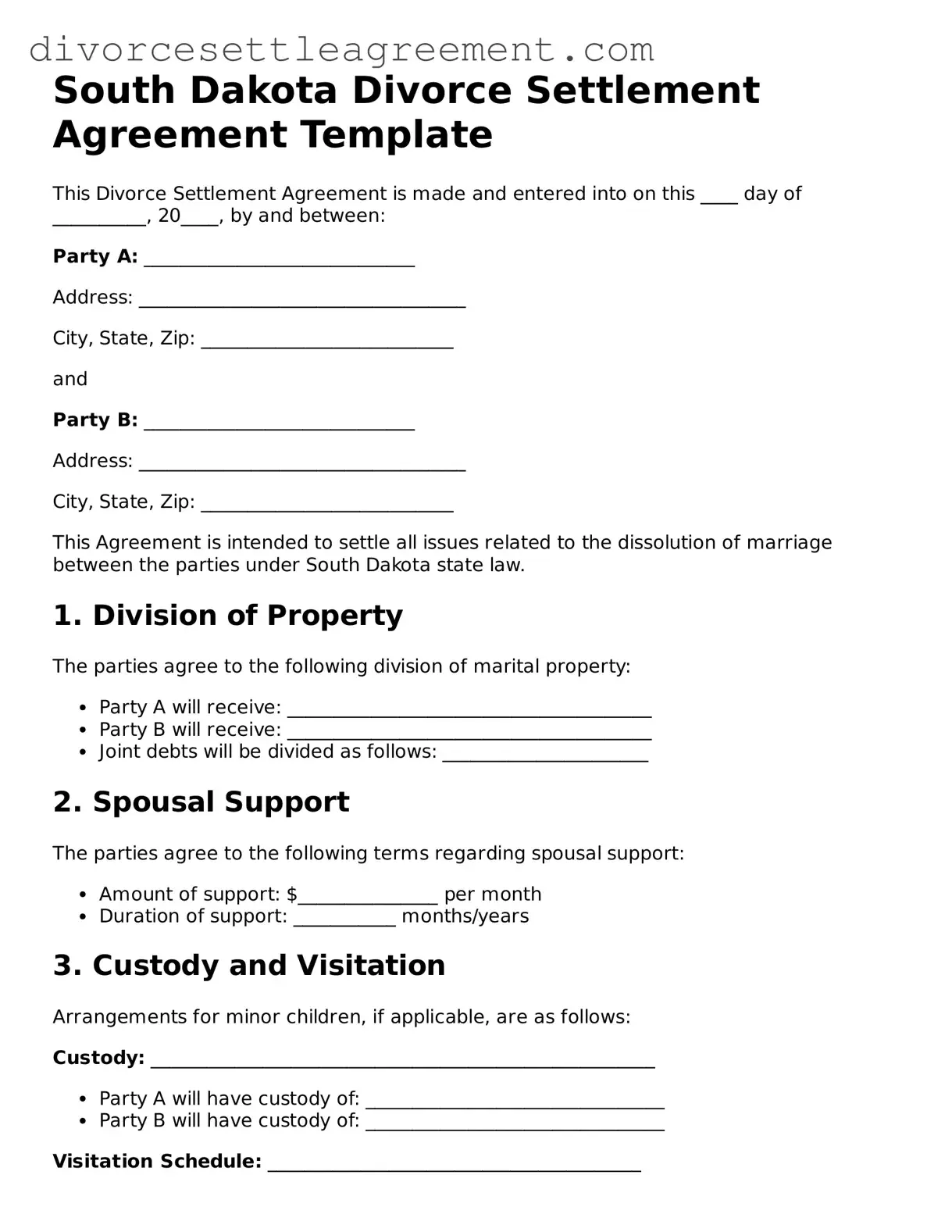Filling out the South Dakota Divorce Settlement Agreement form can be a complex process. Many individuals encounter common pitfalls that can lead to delays or complications in their divorce proceedings. One frequent mistake is failing to provide complete and accurate information. Each section of the form requires specific details. Omitting critical information can result in the court rejecting the document or requiring additional hearings.
Another common error is neglecting to address all assets and debts. Parties often focus on major assets like homes and vehicles but overlook smaller items or joint debts. This oversight can lead to disputes later on, as unlisted assets may be claimed by one party after the divorce is finalized.
Inaccurate valuations of property can also create issues. Individuals may underestimate or overestimate the value of their assets, which can affect the division of property. It is crucial to conduct thorough research or seek professional appraisals to ensure that all items are valued correctly.
Additionally, some people fail to consider tax implications when dividing assets. Certain assets, such as retirement accounts, may have tax consequences that affect their overall value. Understanding these implications is essential for a fair settlement.
Another mistake is not clearly defining the terms of child custody and support. Vague language can lead to misunderstandings and disputes. It is important to specify details such as visitation schedules, responsibilities, and payment amounts to avoid confusion in the future.
Furthermore, individuals may overlook the need for notarization. Some sections of the Divorce Settlement Agreement require notarized signatures to be legally binding. Failing to have the document notarized can delay the finalization of the divorce.
Finally, not reviewing the completed form before submission can lead to errors. A thorough review can catch mistakes or inconsistencies that might otherwise go unnoticed. Taking the time to carefully check the document can prevent complications and ensure a smoother divorce process.
